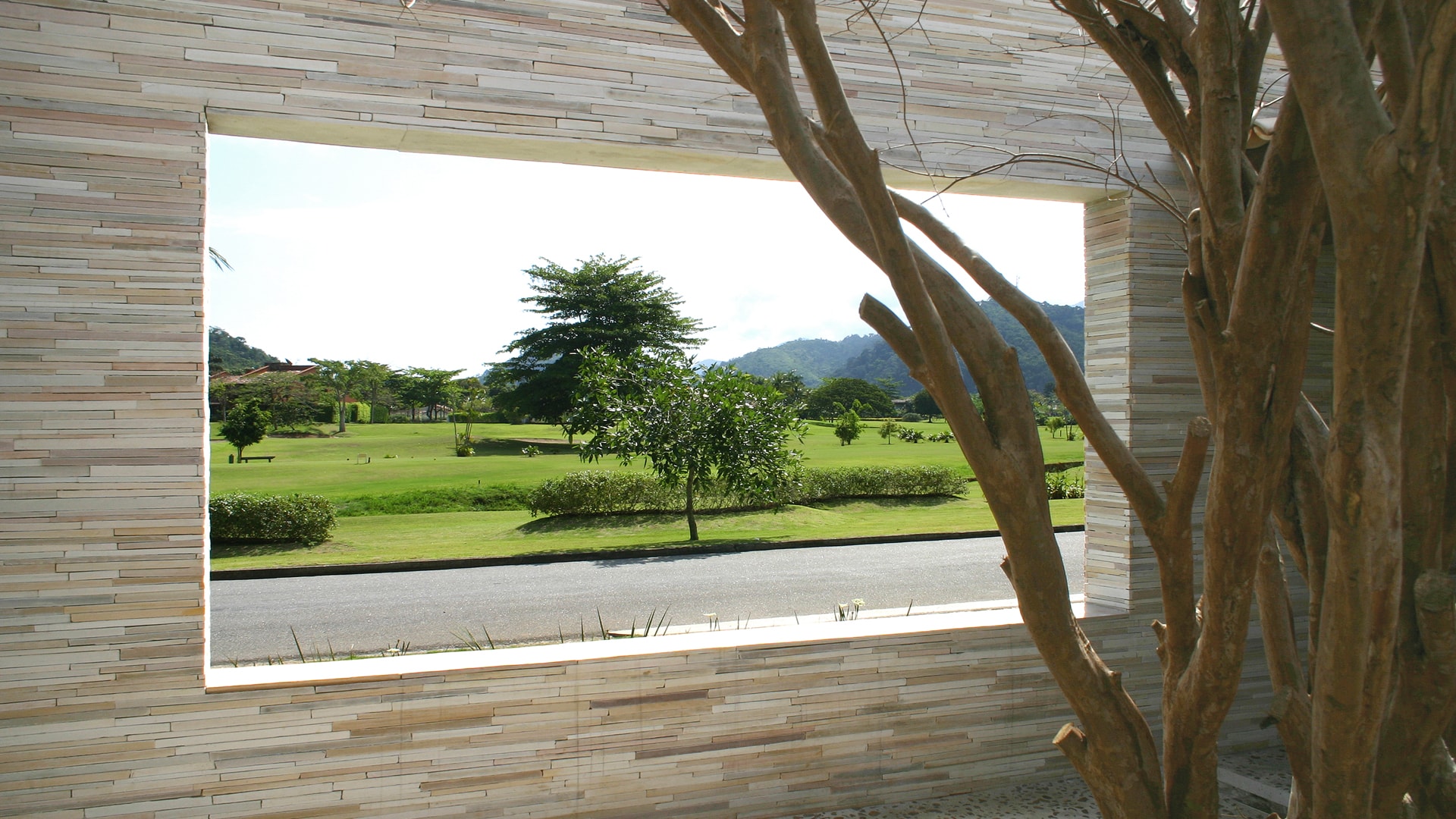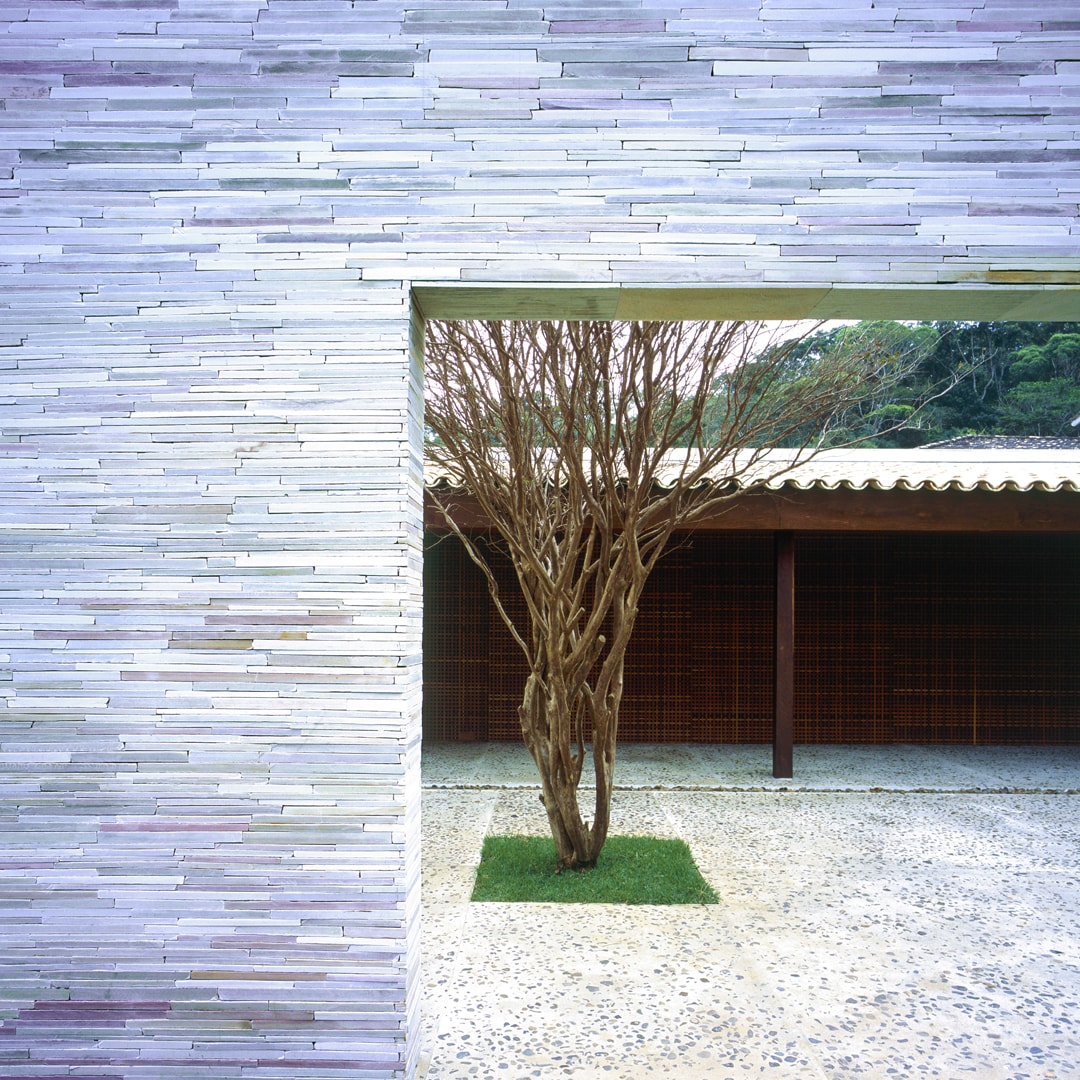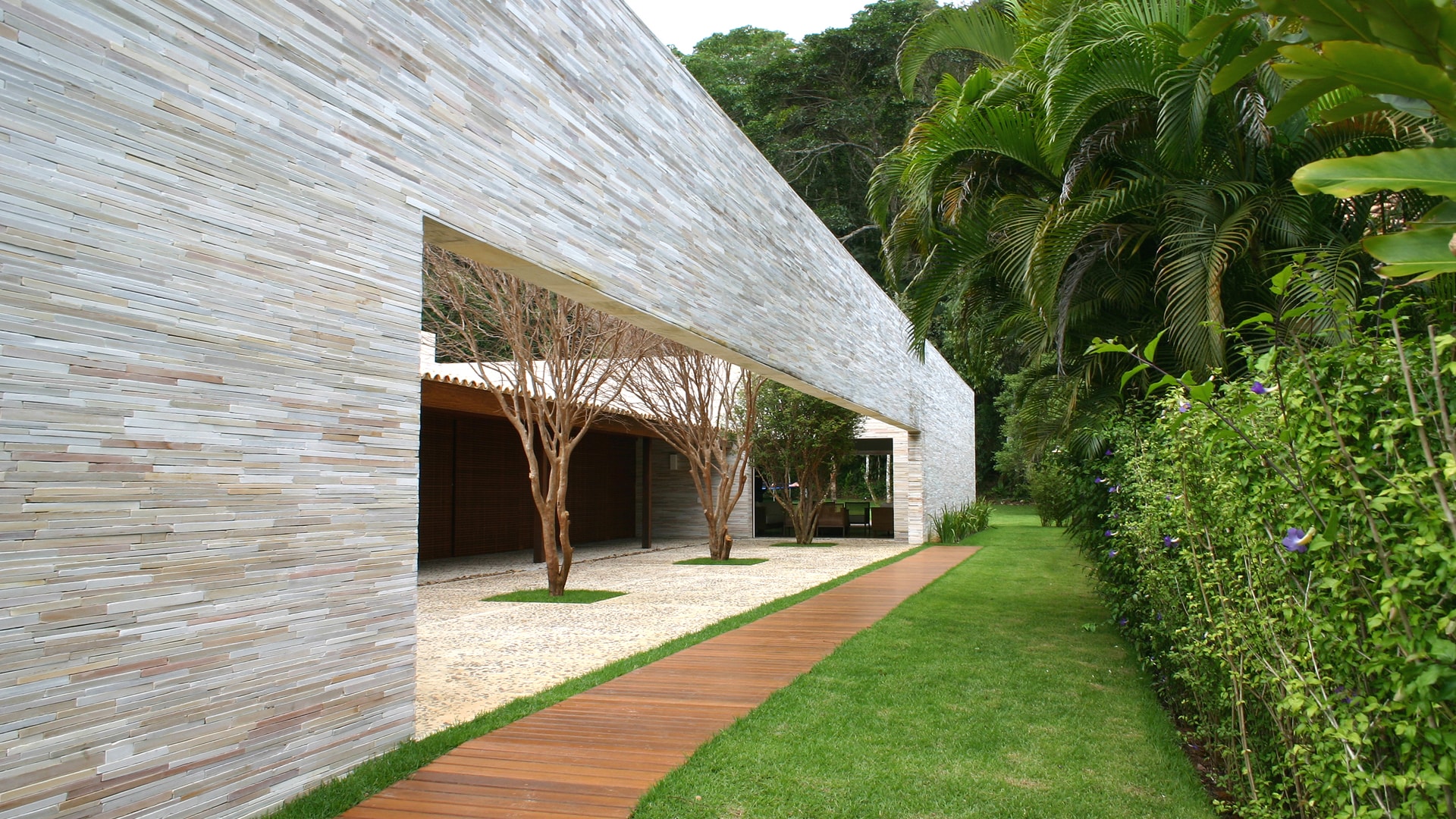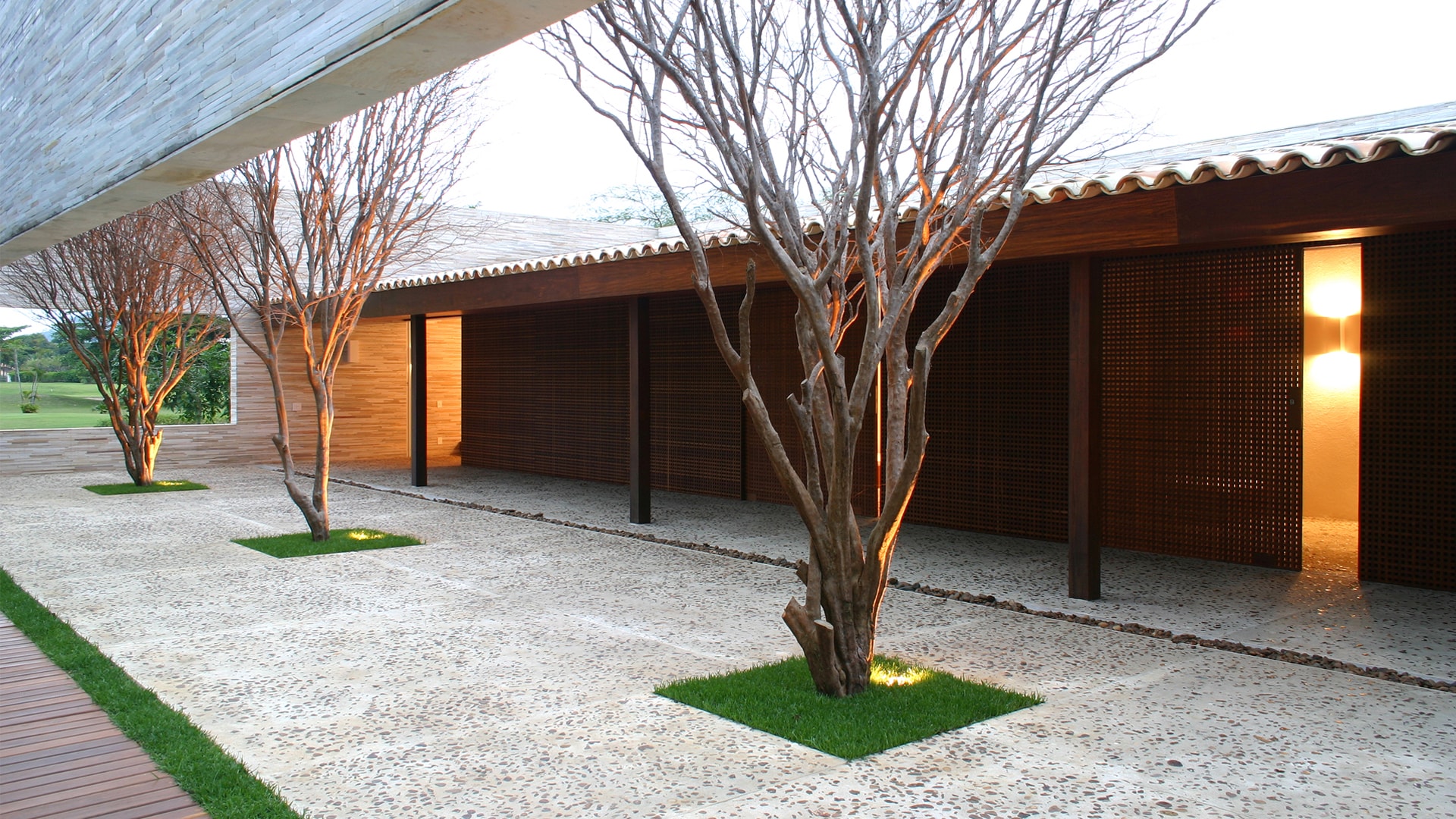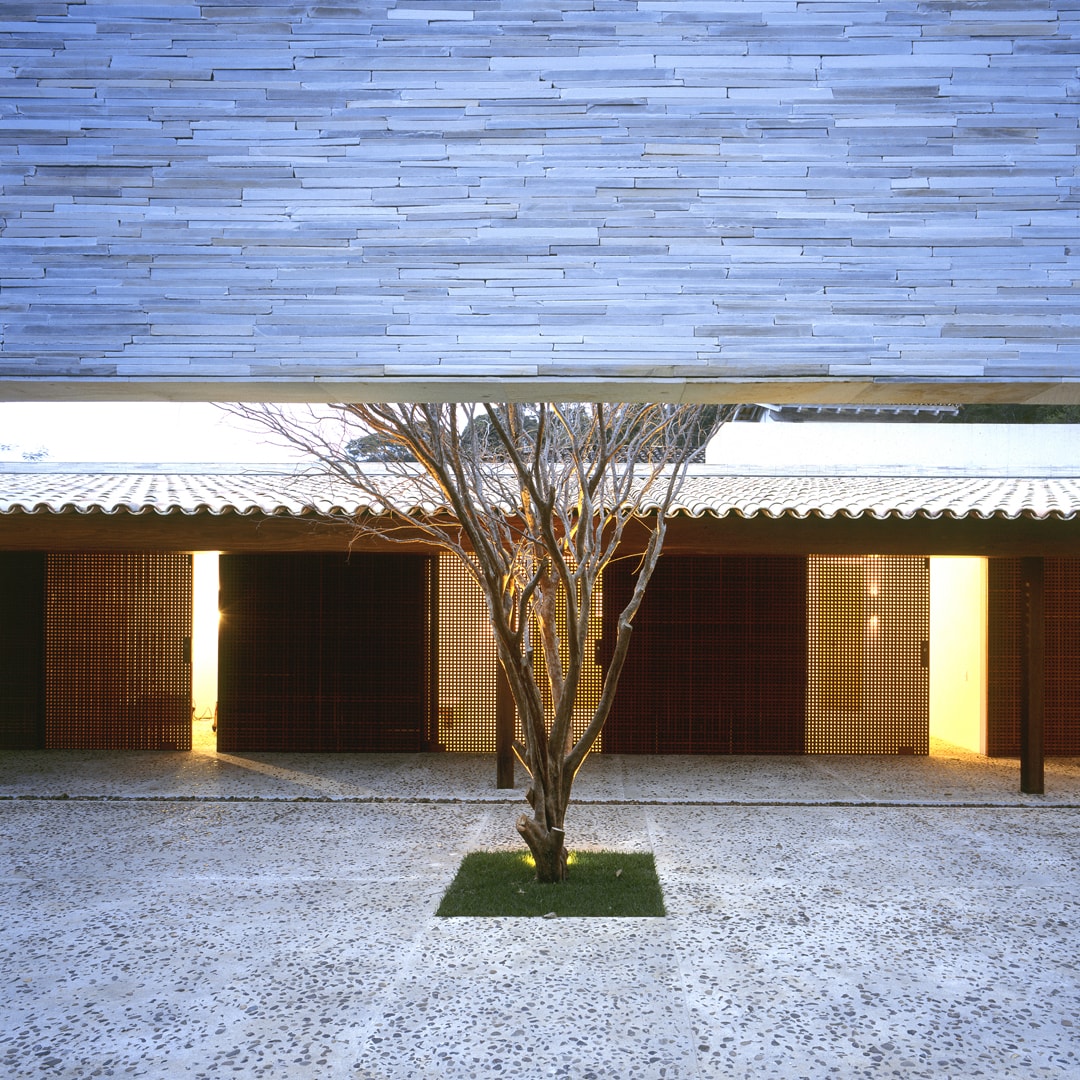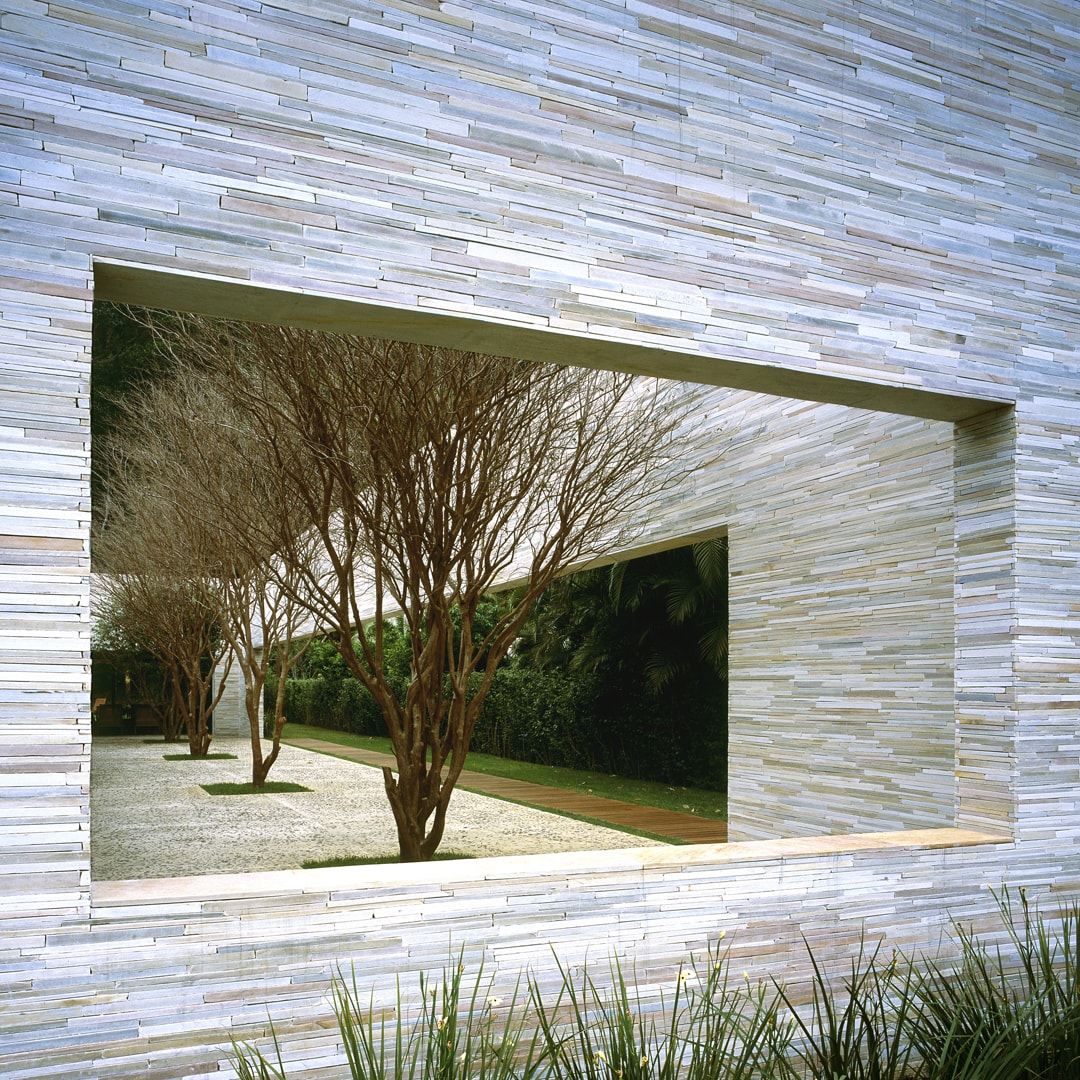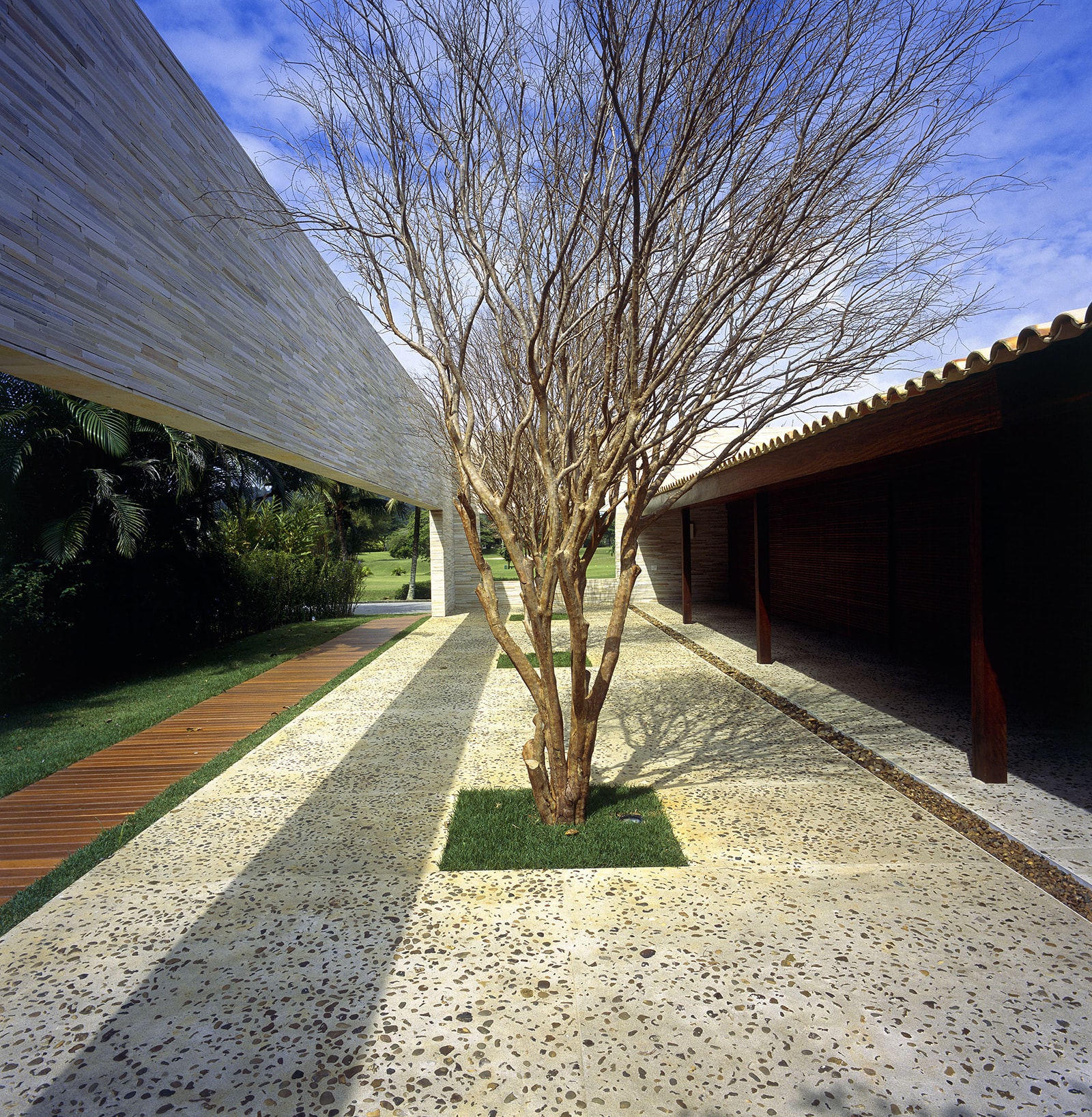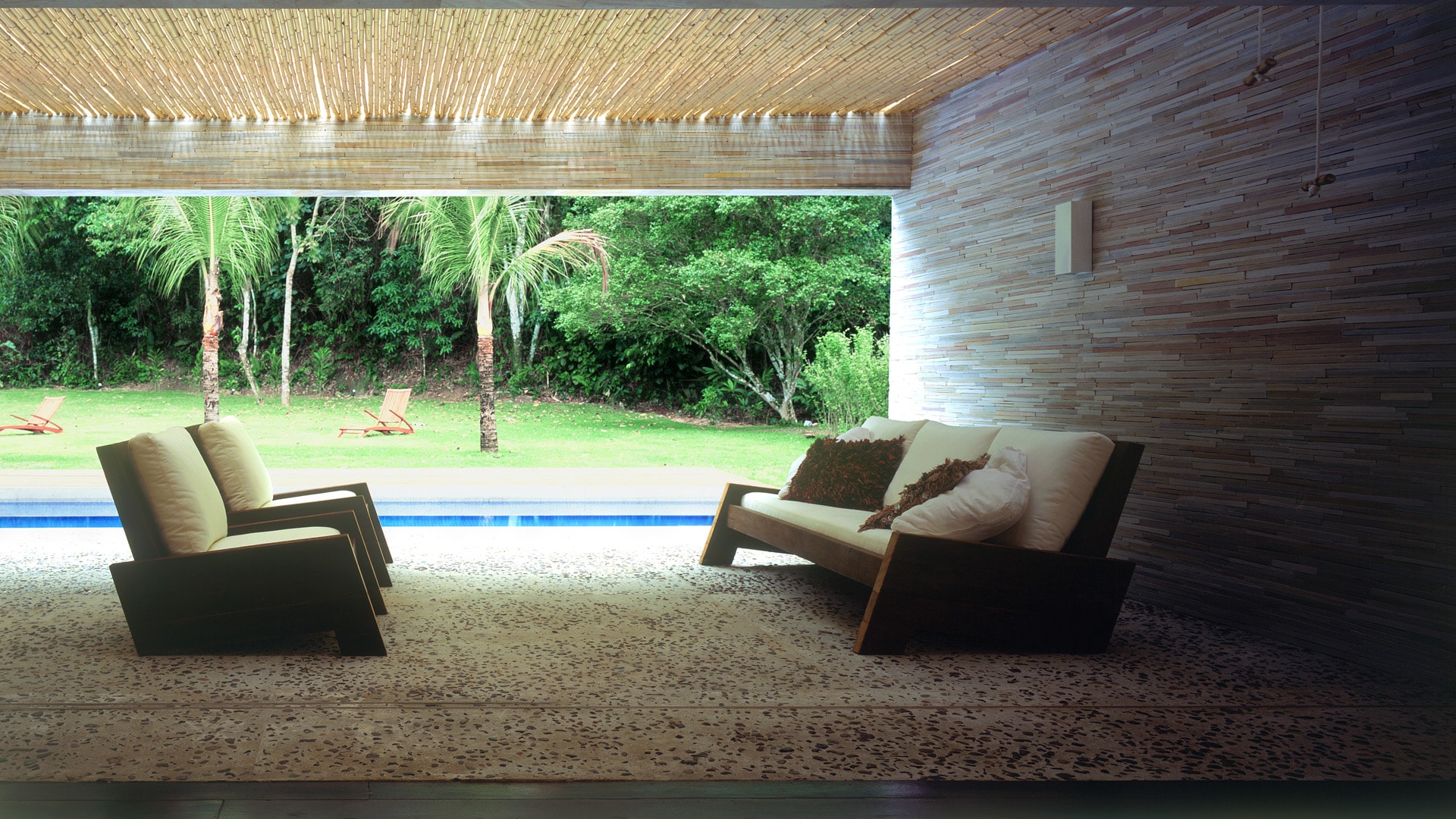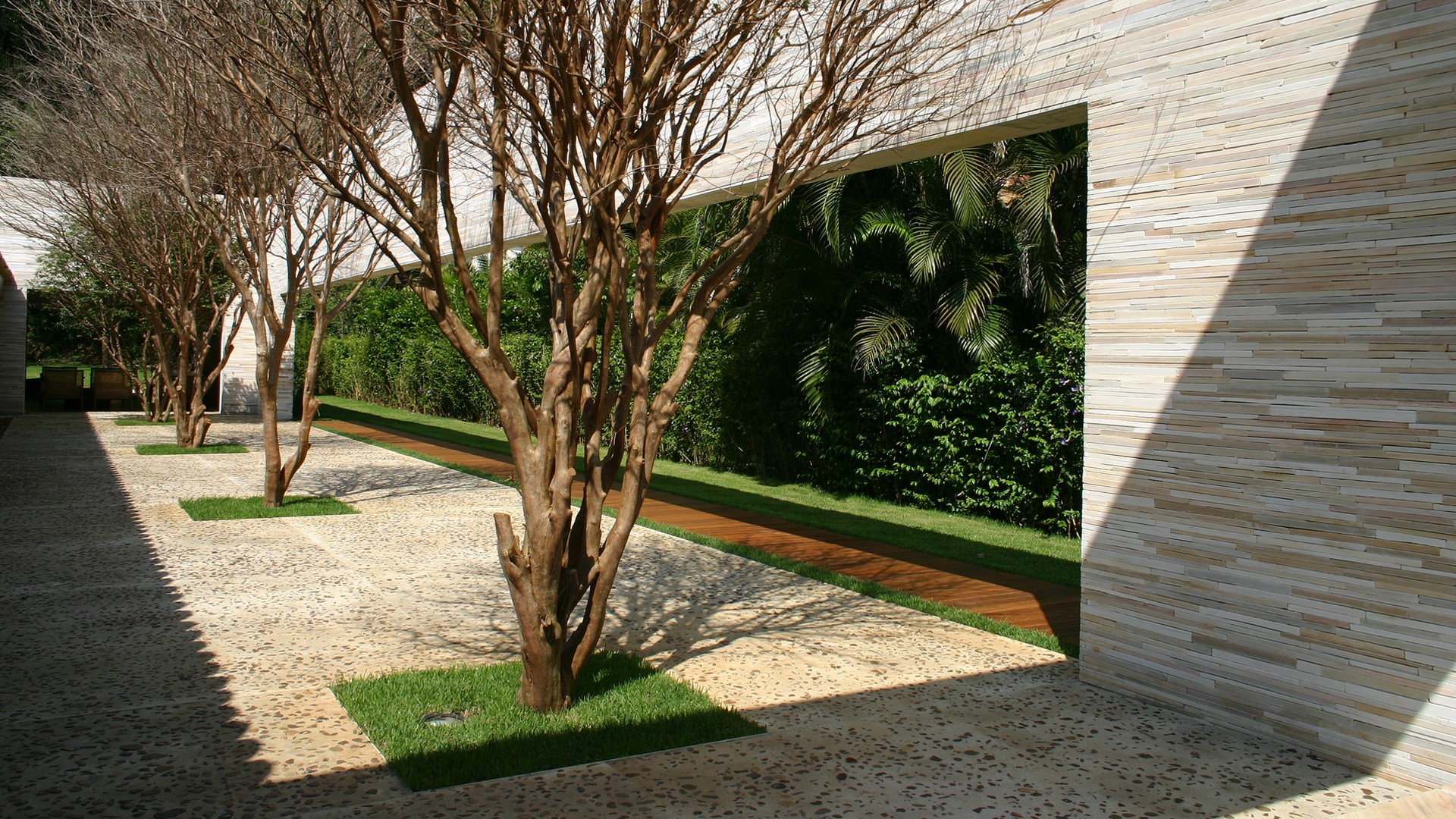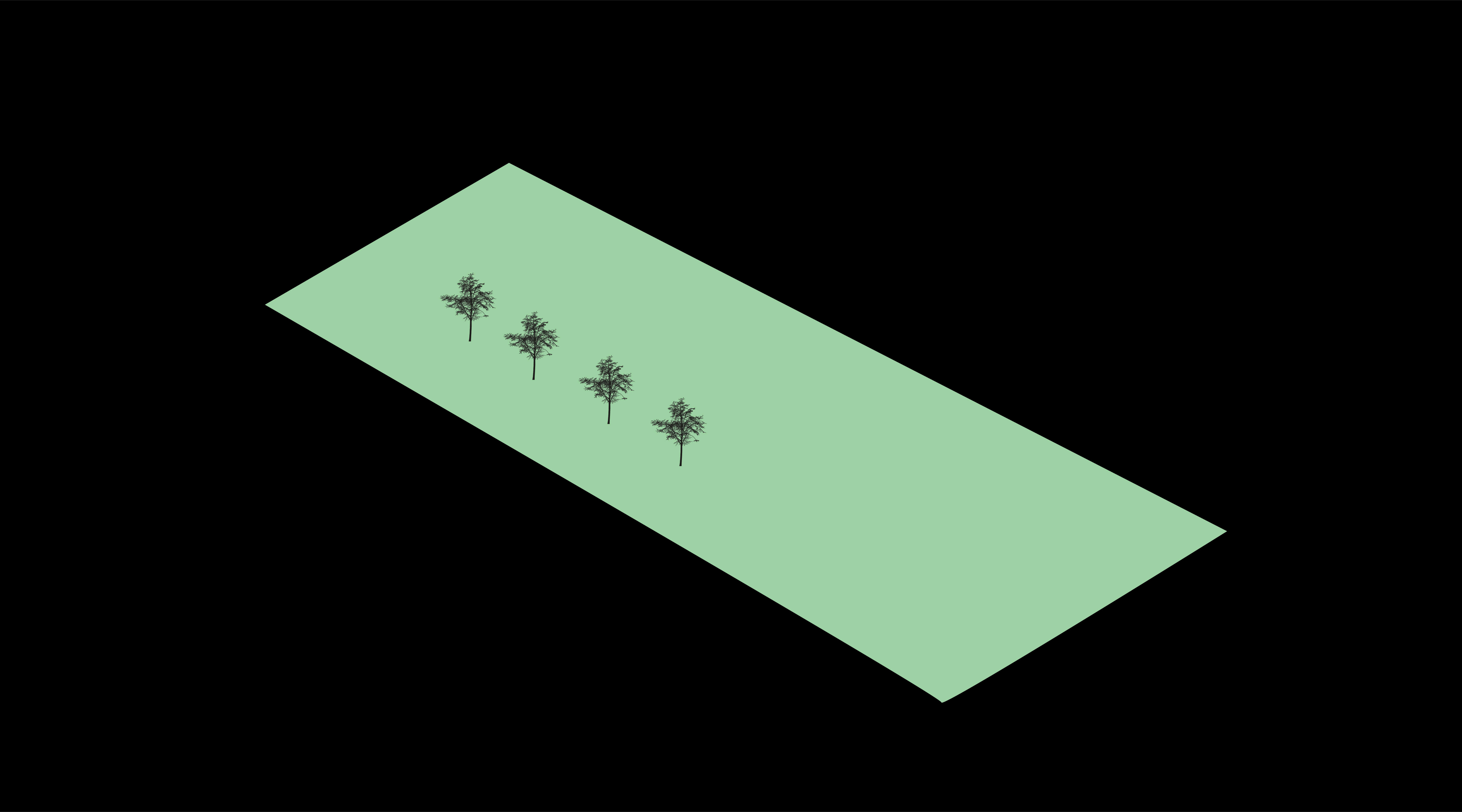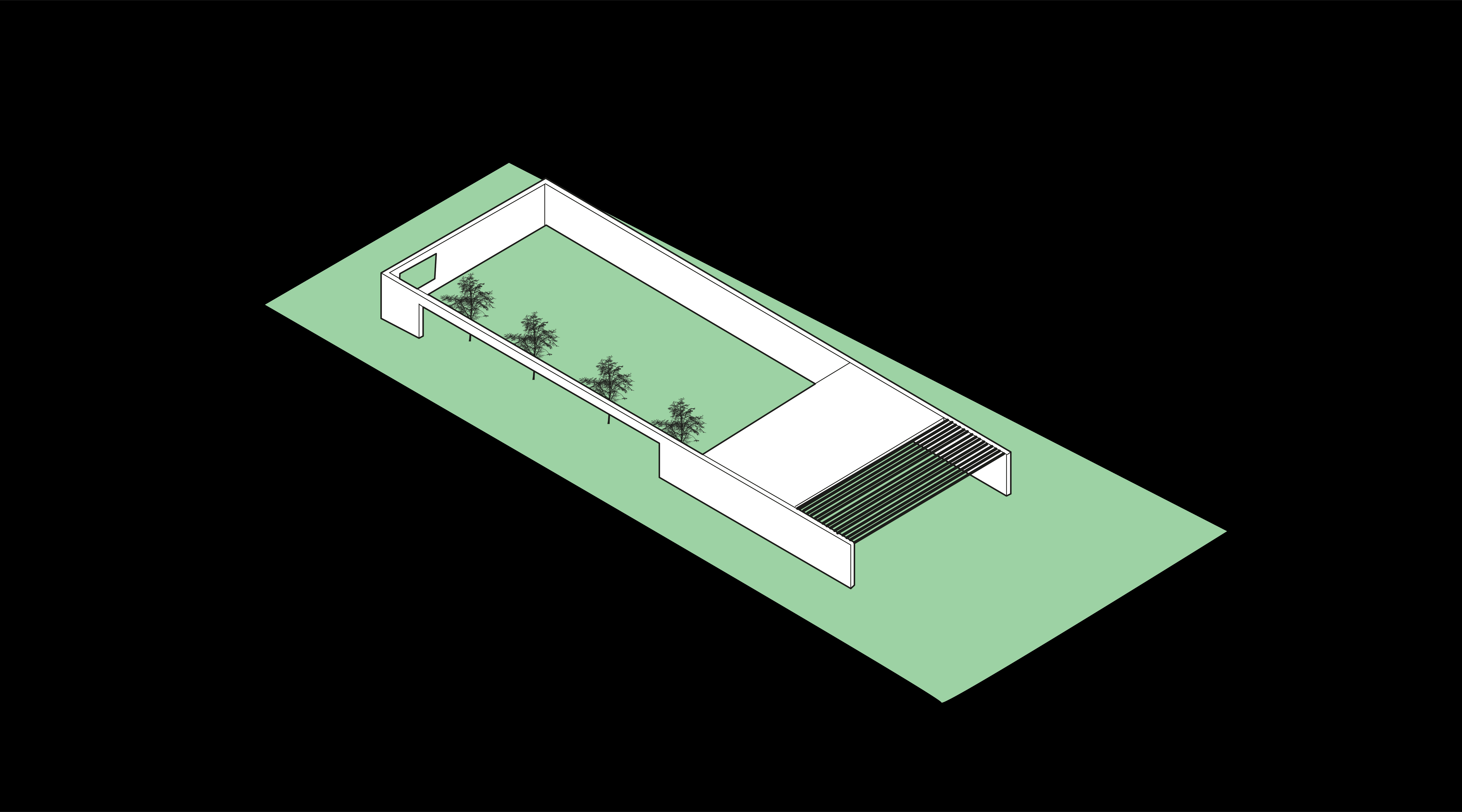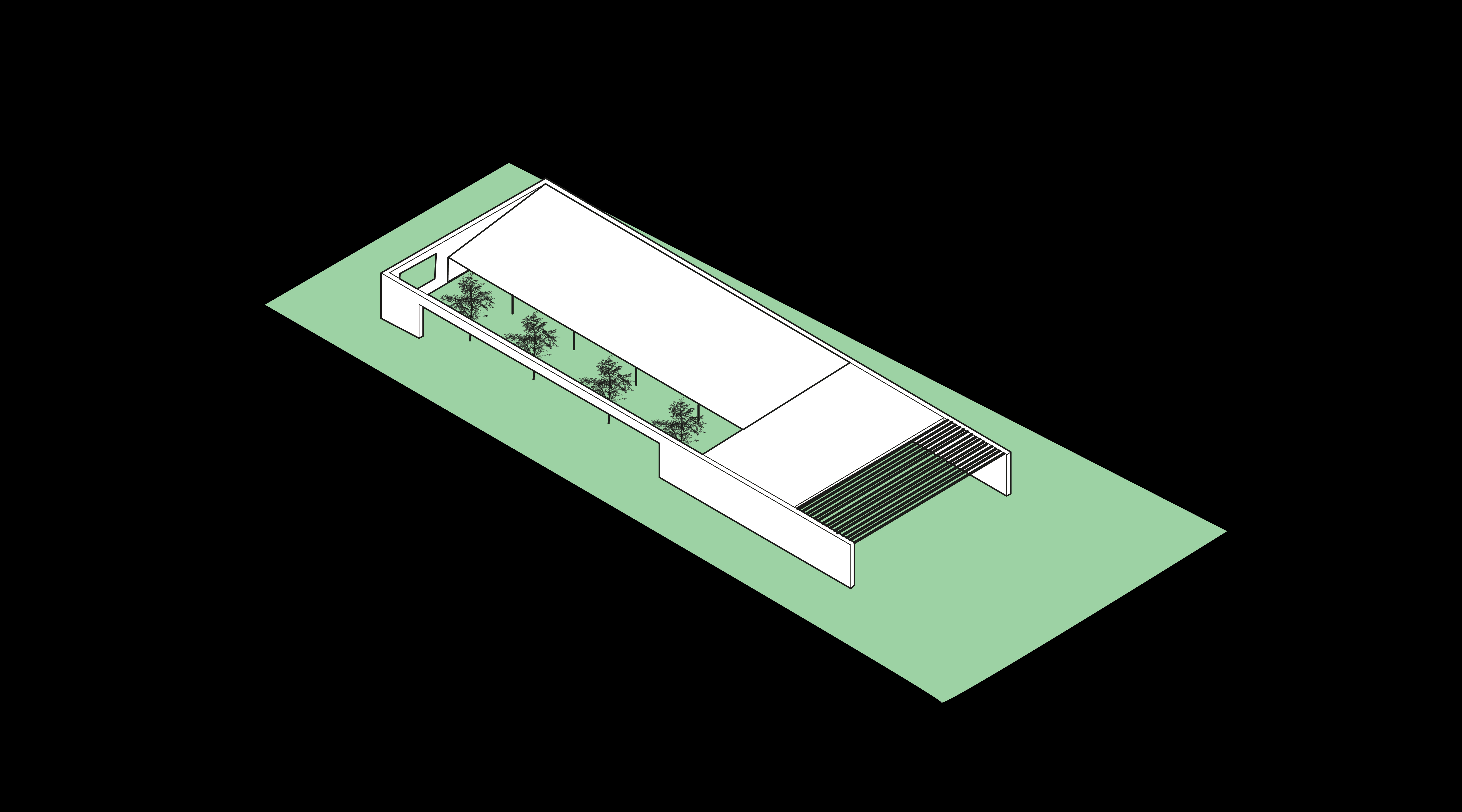Local legislation demanded the design of a gable roof with clay tiles for Du Plessis House. These restrictions opened a new path for studio mk27 projects: to reinterpret the colonial and vernacular Brazilian architecture traditions into a contemporary language.
If, on the one hand, the project explores traditional materials and solutions such as the internal patio and wooden mashrabiya panels applied to sliding doors, on the other, it signals the approach of the studio with miesian lexicon of formal purity.
This relationship is literally translated in the architectural form. On the outside, the house is a prismatic volume in laminated canjiquinha stone. Going inside this shell, we discover a house with twists of the colonial architecture built in this region of Paraty.
The patio, with 4 jabuticabeiras trees and a 90m2-floor, organizes the relationship of bedrooms and living room, working as entry hall.
The union of historical-colonial know-how and modern logic has become one of the recurring architectural questions of subsequent projects of studio mk27, in both plan design and use of materials.
Gabriel Kogan
October 27th, 2003.
7:00 in the morning. We are deciding if we travel to shoot photos of the Du Plessis house, 400 kilometers from São Paulo and 15 kilometers from the historic city of Paraty, Rio de Janeiro. It is raining uninterruptedly.
We risk it. 4 hours later and we are just arriving. I hadn´t yet seen the house completely finished. It moves me. On the outside, a large box made of mineira-stone (a typical Brazilian stone), surrounding an inner-patio with four jabuticabeira trees which, interestingly enough, is not only my favorite tree but its fruit is also my favorite. The flooring of the house is of cement with small swirling pebbles. I think it looks good. The natural wood muxarabi skin, filtering the light in the room, was very well-done. ( I don´t know if it´s “good” to use adjectives in a descriptive memorial, but that´s what I think ).
The photographer likes the fact that the house is modern on the outside and, looking through the patio, it is traditional. I explain that according to condominium regulation the houses must have a clay tile covering, and this is the way in which we interpreted this rule, or rather, the way we got around the rule, our way. The ambient is more like Iceland than a tropical beach, but we begin to shoot anyway. At night we went to Paraty. The city is absolutely wonderful. We stayed at an inn which even had monkeys in its tropical garden. At night I dream of the appearance of an angel. I have never had a religious dream before. Maybe this has something to do with the austere decoration of the room which looks like a convent. In the morning we go back to the house and find some sunlight. We are back. The arrival in to São Paulo is shocking. The city is simply appalling. Sign of the cross.
Marcio Kogan
location > paraty . rj . brazil
project > october . 2001
conclusion > november . 2003
site area > 990 sqm
built area > 405 sqm
-
architecture and interior design > studio mk27
architect > marcio kogan
co-architects > cassia cavani . diana radomysler
interiors > diana radomysler
project team > oswaldo pessano . samanta cafardo
-
contractor > dp unique
structure engineer > gramont engenharia
landscape design > marcelo faisal
-
photographer > arnaldo pappalardo
Local legislation demanded the design of a gable roof with clay tiles for Du Plessis House. These restrictions opened a new path for studio mk27 projects: to reinterpret the colonial and vernacular Brazilian architecture traditions into a contemporary language.
If, on the one hand, the project explores traditional materials and solutions such as the internal patio and wooden mashrabiya panels applied to sliding doors, on the other, it signals the approach of the studio with miesian lexicon of formal purity.
This relationship is literally translated in the architectural form. On the outside, the house is a prismatic volume in laminated canjiquinha stone. Going inside this shell, we discover a house with twists of the colonial architecture built in this region of Paraty.
The patio, with 4 jabuticabeiras trees and a 90m2-floor, organizes the relationship of bedrooms and living room, working as entry hall.
The union of historical-colonial know-how and modern logic has become one of the recurring architectural questions of subsequent projects of studio mk27, in both plan design and use of materials.
Gabriel Kogan
October 27th, 2003.
7:00 in the morning. We are deciding if we travel to shoot photos of the Du Plessis house, 400 kilometers from São Paulo and 15 kilometers from the historic city of Paraty, Rio de Janeiro. It is raining uninterruptedly.
We risk it. 4 hours later and we are just arriving. I hadn´t yet seen the house completely finished. It moves me. On the outside, a large box made of mineira-stone (a typical Brazilian stone), surrounding an inner-patio with four jabuticabeira trees which, interestingly enough, is not only my favorite tree but its fruit is also my favorite. The flooring of the house is of cement with small swirling pebbles. I think it looks good. The natural wood muxarabi skin, filtering the light in the room, was very well-done. ( I don´t know if it´s “good” to use adjectives in a descriptive memorial, but that´s what I think ).
The photographer likes the fact that the house is modern on the outside and, looking through the patio, it is traditional. I explain that according to condominium regulation the houses must have a clay tile covering, and this is the way in which we interpreted this rule, or rather, the way we got around the rule, our way. The ambient is more like Iceland than a tropical beach, but we begin to shoot anyway. At night we went to Paraty. The city is absolutely wonderful. We stayed at an inn which even had monkeys in its tropical garden. At night I dream of the appearance of an angel. I have never had a religious dream before. Maybe this has something to do with the austere decoration of the room which looks like a convent. In the morning we go back to the house and find some sunlight. We are back. The arrival in to São Paulo is shocking. The city is simply appalling. Sign of the cross.
Marcio Kogan





